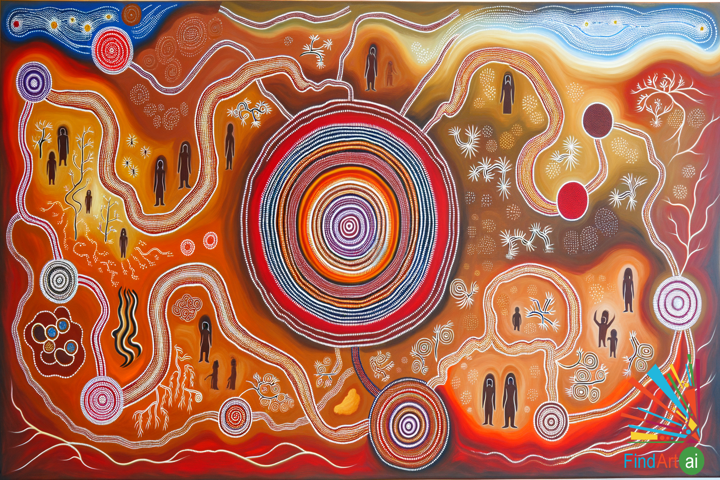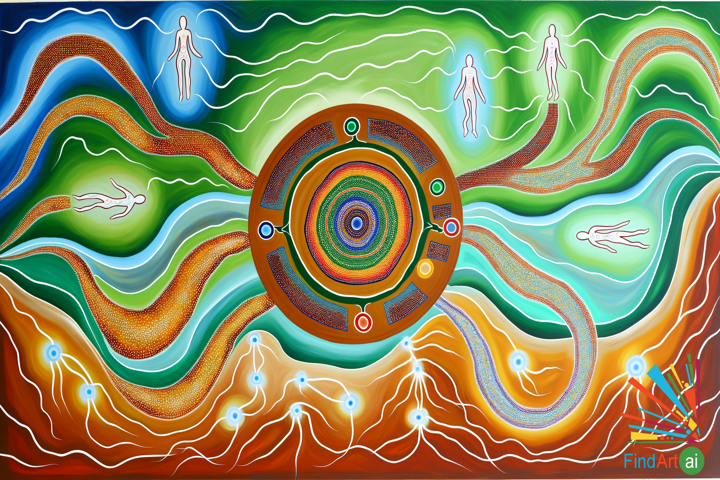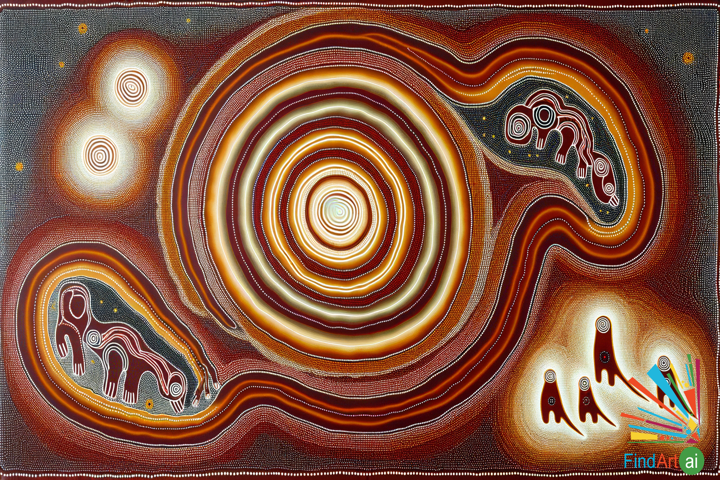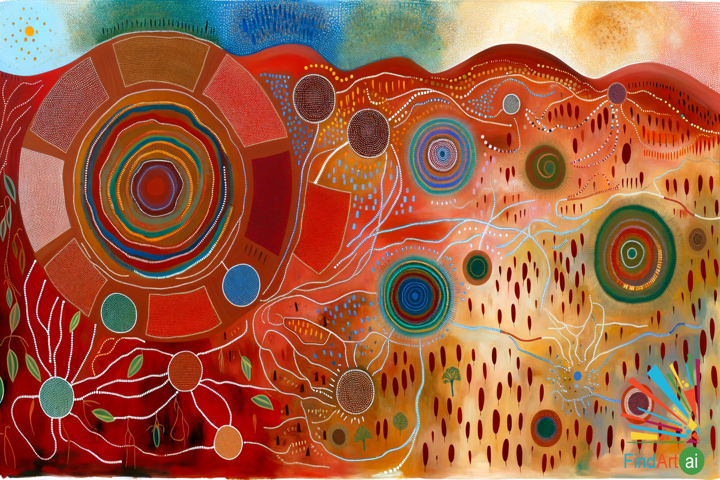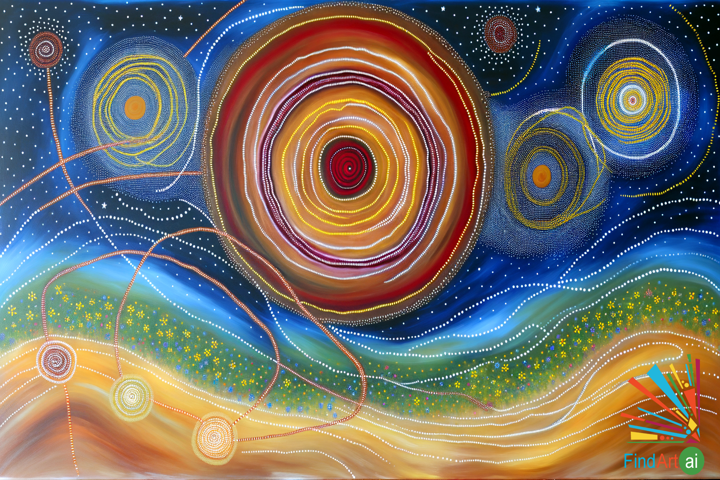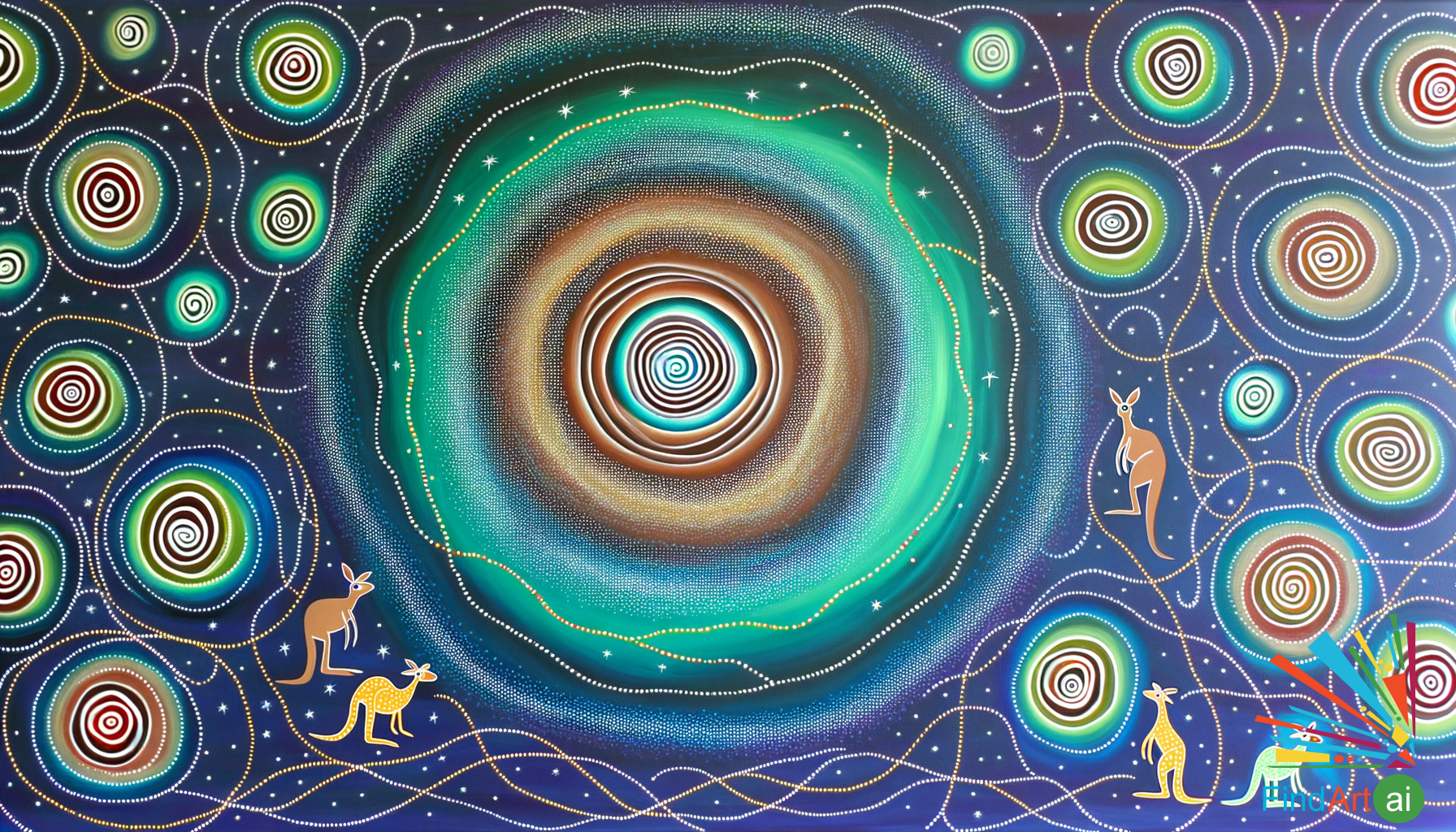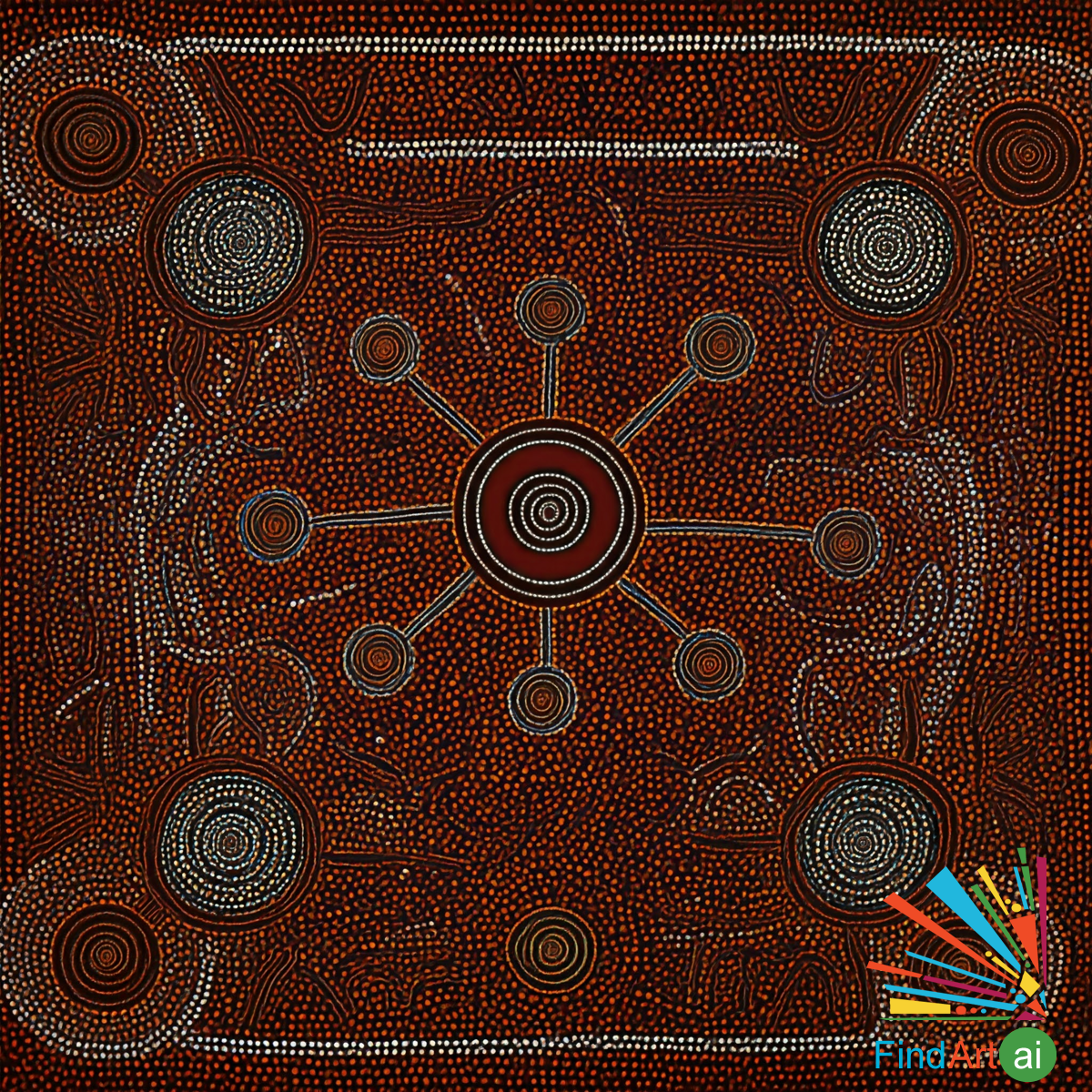
Aboriginal Dot Paintings with Connection to Ancestors Theme
Aboriginal Dot Paintings with a Connection to Ancestors theme are a deeply spiritual form of indigenous Australian art that represents ancestral stories, sacred rituals, and the profound relationship between Aboriginal people and their land. These paintings use intricate dot patterns to map out the landscapes, animals, and symbols that connect to "Dreamtime" (the Aboriginal understanding of the world, its creation, and its ancestral beings). Each dot and symbol carries meaning, and the artwork serves as a visual storytelling tool, passing down knowledge and honoring ancestors.
Key Characteristics of Aboriginal Dot Paintings with the Connection to Ancestors Theme
- Symbolic Use of Dots
- The dotting technique is a signature of this art form, where thousands of small dots are applied to the canvas in patterns that create abstract or figurative representations of landscapes, animals, and ancestral stories. Each dot has symbolic meaning, and the patterns often represent journeys or sacred sites connected to ancestors.
- Example: A painting may feature dots arranged in circular patterns representing waterholes, surrounded by paths that symbolize the travels of ancestral beings across the land.
- Connection to Dreamtime
- Aboriginal Dot Paintings are closely tied to Dreamtime, the creation period in Aboriginal belief systems when ancestral spirits formed the land, rivers, animals, and human beings. The paintings often depict the travels, actions, and stories of these spirits, showing how they shaped the natural world and continue to influence present-day life.
- Example: A painting might depict the travels of a Rainbow Serpent, an important ancestral figure in many Aboriginal cultures, represented through flowing patterns of dots that mimic the movement of the serpent across the land.
- Abstract Representations of Sacred Land
- These paintings often represent sacred places such as waterholes, mountains, or animal habitats, which are believed to hold the presence of ancestral spirits. The paintings are both maps and spiritual guides, linking the present to the past and helping Aboriginal people connect to their ancestors.
- Example: A series of concentric circles created from dots might represent a sacred meeting place or the site of an important Dreamtime event, linking the physical landscape to its spiritual significance.
- Use of Earth Tones
- Aboriginal Dot Paintings frequently use earthy colors like ochre, red, black, and yellow, derived from natural pigments traditionally used in Aboriginal art. These colors reflect the land and the environment, symbolizing the connection between the people, their ancestors, and the natural world.
- Example: A painting depicting a hunting scene from Dreamtime might use warm reds and browns to represent the desert landscape, with dotted tracks leading to ancestral sites or animal spirits.
- Symbolic Imagery
- Aboriginal Dot Paintings often use symbolic forms like U-shapes, which represent people sitting, lines indicating paths or journeys, and circles symbolizing waterholes or campsites. These symbols help to narrate the journeys of ancestors and their impact on the landscape.
- Example: A U-shape might represent an ancestor sitting by a fire at a campsite, with dotted lines leading from this site to others, showing the path of their journey and their interaction with the land.
- Storytelling through Patterns
- Dot paintings are visual stories passed down through generations. The patterns created by dots can represent the travels of ancestors, their actions, and their relationships with animals, plants, and natural forces. These stories are sacred and often passed down orally alongside the paintings.
- Example: A painting might depict a kangaroo hunt, with the kangaroo’s tracks represented in dots, alongside the dotted paths of ancestors who taught hunting skills, showing how these ancestral lessons are preserved through storytelling.
- Spiritual Ritual and Ancestral Honor
- Creating dot paintings is often part of a spiritual practice where the artist connects with their ancestors and the sacred land. The act of painting itself can be a ritual that honors the legacy and teachings of those who came before, reinforcing the bond between the present and the ancestral past.
- Example: The process of painting Dreamtime stories, like the creation of a sacred site or the life of a totemic ancestor, becomes a way of preserving and respecting Aboriginal culture and heritage.
Common Themes in Aboriginal Dot Paintings with Connection to Ancestors
- Ancestral Journeys
- Dot paintings often depict the paths traveled by ancestral beings during Dreamtime. These journeys are mapped out using dots and symbols, showing how ancestors shaped the land and established sacred sites.
- Example: A painting might depict the journey of a mythical ancestor across a desert landscape, with dotted paths linking important sites where significant events took place.
- Land as Sacred Memory
- The land itself is imbued with the presence of ancestors in Aboriginal culture. Dot paintings reflect this belief, showing the land not just as geography but as a living memory of ancestral actions, continually honored and revisited.
- Example: A painting may represent the connection between a present-day Aboriginal community and the ancient stories of their ancestors, showing sacred landscapes through abstracted, symbolic dot patterns.
- Ceremonial Stories
- Many dot paintings are linked to ceremonial practices that celebrate and reenact ancestral stories. These ceremonies, along with the paintings, serve to educate younger generations about the values, laws, and customs passed down through Dreamtime.
- Example: A painting created for a coming-of-age ceremony might depict a specific Dreamtime story that teaches young people about their cultural responsibilities and their connection to the land.
- Totemic Beings
- Aboriginal culture often revolves around totems, which are spiritual entities or ancestors that individuals or communities are linked to. Dot paintings may depict these totemic beings, symbolizing their ongoing spiritual presence in the lives of Aboriginal people.
- Example: A painting showing a series of kangaroos, each linked by dotted paths, might represent a family’s connection to the kangaroo as their totem, with the dots symbolizing the spiritual and ancestral links between people and the animal.
Echoes of the Ancestors: A Vibrant Tapestry of Sacred Australian Outback
"Echoes of the Ancestors" is a vibrant tapestry of earthy reds, ochres, and whites, capturing the sa...
Echoes of the Ancestors: A Vibrant Dot Painting Celebrating Aboriginal Heritage
"Echoes of the Ancestors" is a vibrant painting capturing the timeless bond between Aboriginal peopl...
Eternal Ties: An Aboriginal Dot Painting Celebrating Ancestral Connections and Life's Cycle
"Eternal Ties" is a vibrant Aboriginal dot painting exploring ancestral connections. A swirling spir...
Whispers of the Ancestral Winds: A Tapestry Celebrating Australia's Heritage and Bond
"Whispers of the Ancestral Winds" is a vibrant tapestry of earthy reds, ochres, and terracottas, emb...
Whispering Echoes: A Tapestry of Ancestral Connections and Sacred Gatherings
"Whispering Echoes" is a vibrant tapestry of dots symbolizing the land's heartbeat and ancestral con...
Whispering Spirits: Vibrant Aboriginal Dot Art Celebrating Ancestral Connections
"Whispering Spirits" is a vibrant tapestry of colors in traditional Aboriginal dot painting style. I...

